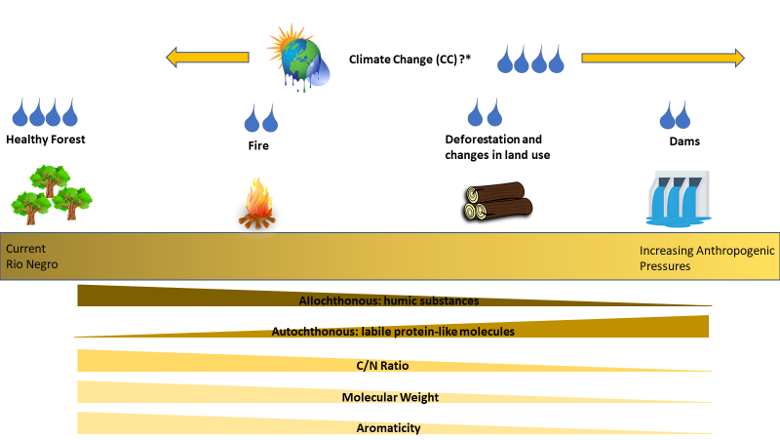
Anthropogenic activities modify the source, character and role of dissolved organic carbon in the black-water river, the Rio Negro, Amazonia.
Abstract
The Rio Negro watershed is unique among black water rivers, supporting extensive areas of white-sand ecosystems and peat deposits which influence the character of the dissolved organic carbon (DOC). The humic material in the DOC reaching the river is higher in aromaticity, mean molecular mass, and O/C ratio and lower in H/C ratio than those of other Amazonian black waters. The composition of the DOC changes with season having a higher percentage of aliphatic to aromatic structures during high water when much DOC enters the river from the land. These imply that the principle sources of DOC to the river change with the hydrological cycle.
DOC is the backbone of the Rio Negro aquatic ecosystem contributing to the acidic, stained nature of the system and supporting the microbial food-web which underlies the vast diversity and productivity of the fish community. Its secondary importance is the return of carbon to the atmosphere through photo-oxidation of DOC and microbial respiration which produce carbon dioxide. Thirdly, the Rio Negro is an important source of DOC to down river reaches where some DOC is sedimented out and the remainder is injected into the ocean.
Recognizing the importance of the hydrological cycle, temperature and climate variability on the functioning of this DOC-based ecosystem, we explore the predictions for climate change in the region and the implications of deforestation, fire and dams on the production and character of DOC in the future.